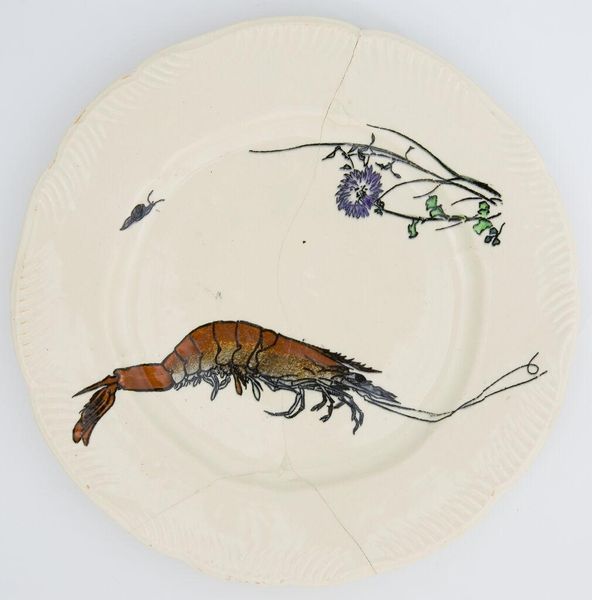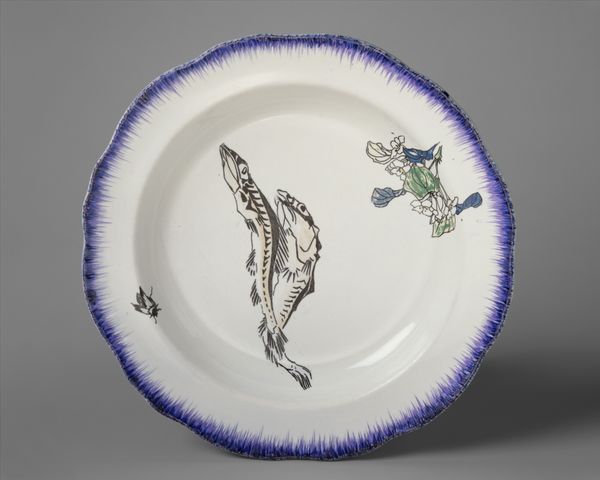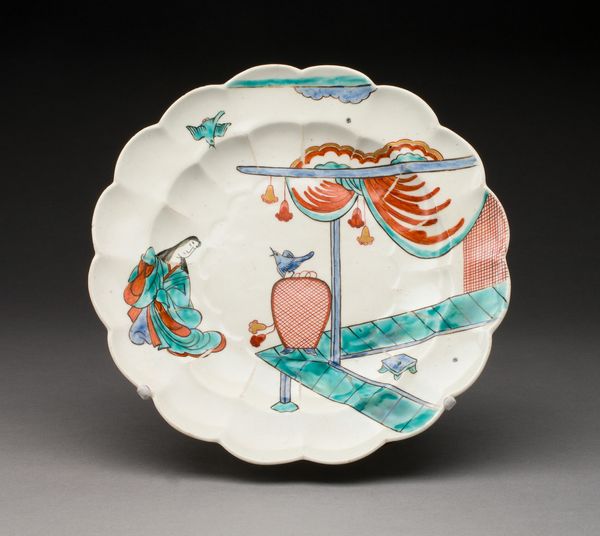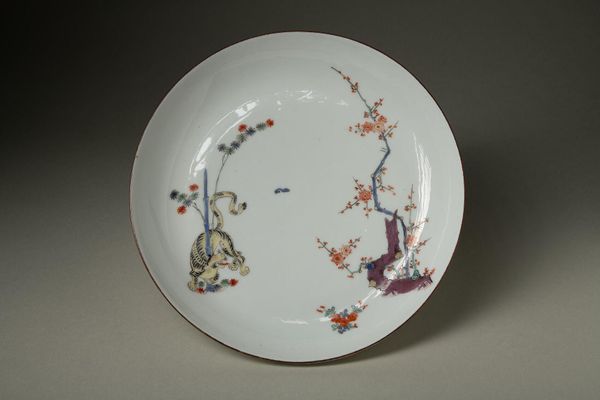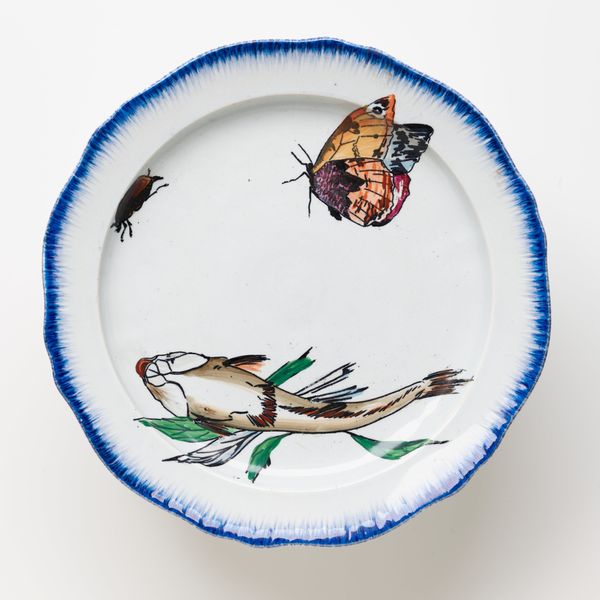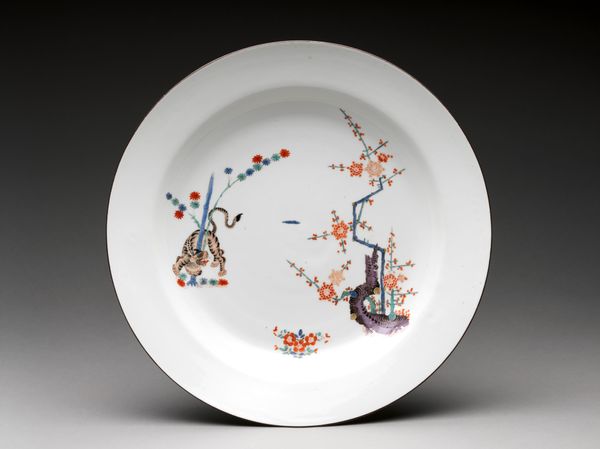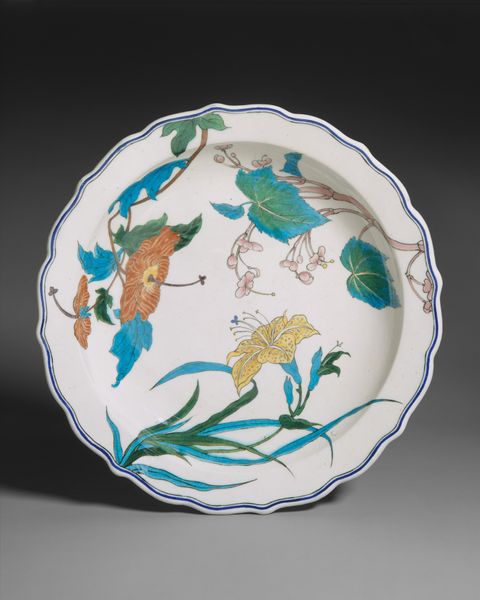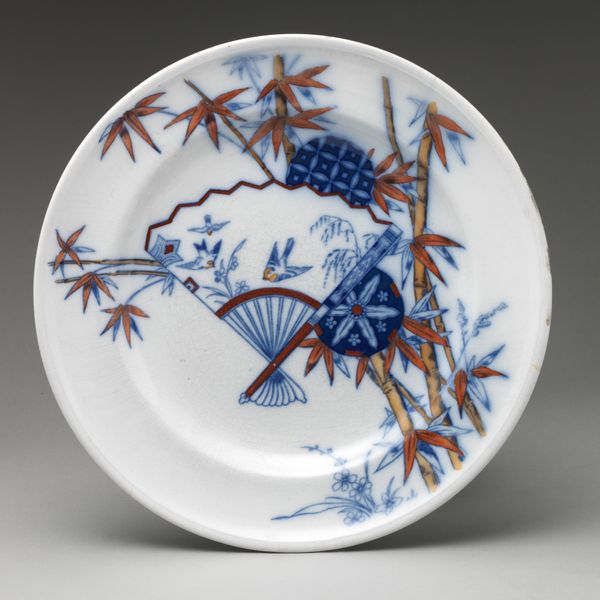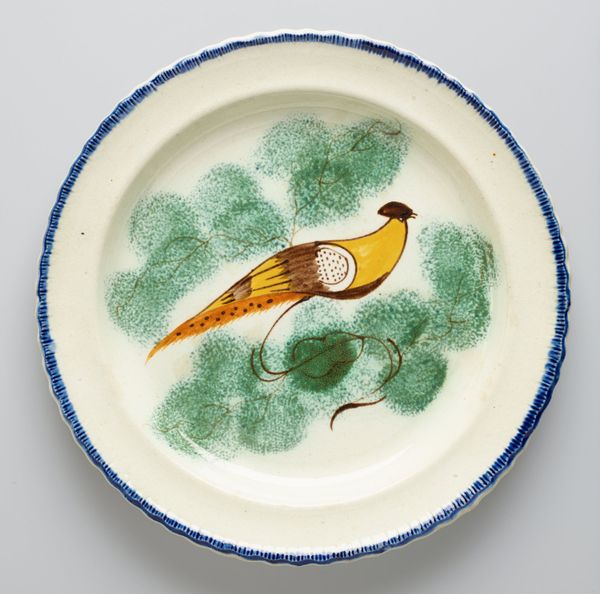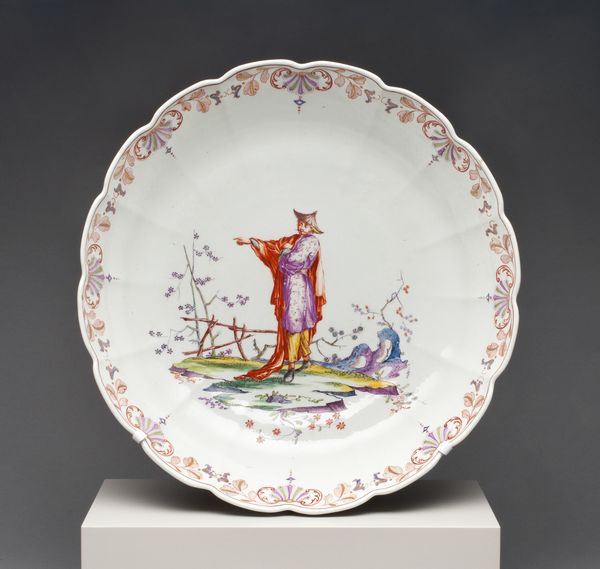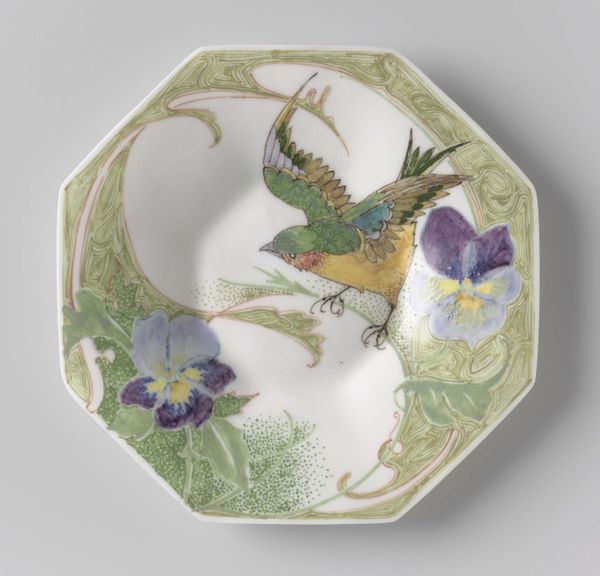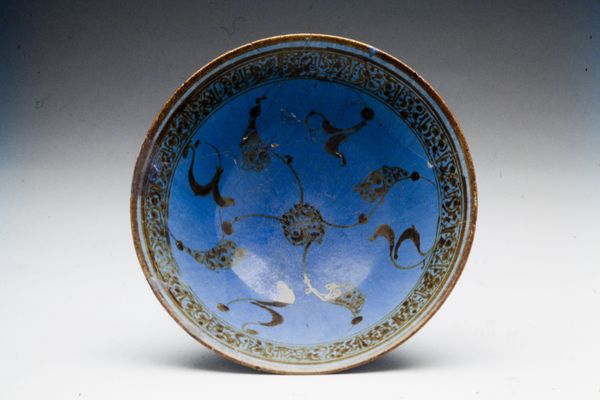
drawing, ceramic, earthenware
#
drawing
#
ceramic
#
earthenware
#
ceramic
#
decorative-art
Dimensions: 1 3/16 x 10 5/16 x 10 5/16 in. (3.02 x 26.19 x 26.19 cm)
Copyright: Public Domain
Editor: This is William Stephen Coleman's "Plate" from around 1870, crafted with drawing on earthenware. It’s quite charming! I'm drawn to the scattered sea life and coral motifs. What symbolic readings do you glean from this piece? Curator: It presents a stylized underwater tableau, doesn’t it? The isolated images – coral, shell, lobster claw – resonate beyond simple representation. These aquatic symbols evoke potent ideas within the collective cultural memory of the Victorian era, like seaside leisure and marine biology. Consider the Victorians’ obsession with natural history. How do you think that fascination manifested visually? Editor: I guess through detailed scientific illustrations… Curator: Precisely! The plate blends artistic expression and scientific curiosity, speaking to a society enthralled by discovery. Think of the symbolic weight of the shell: a relic of a living creature and a keepsake of the ocean's vastness. The crustacean and seaweed echo an interest in classification. Editor: So, it's less about the literal and more about what these symbols communicate about the cultural values and fixations of that period? Curator: Indeed. And the seemingly random arrangement also speaks to the Victorian tendency to create dense patterns and arrangements of collections that expressed status, curiosity, and control of the natural world. What’s your take on the seemingly off-hand placement of these motifs around the plate? Editor: That's helpful context. Now it feels more intentional and less like a decorative flourish. I'll definitely consider the Victorian interest in science when looking at pieces like this in the future.
Comments
No comments
Be the first to comment and join the conversation on the ultimate creative platform.
